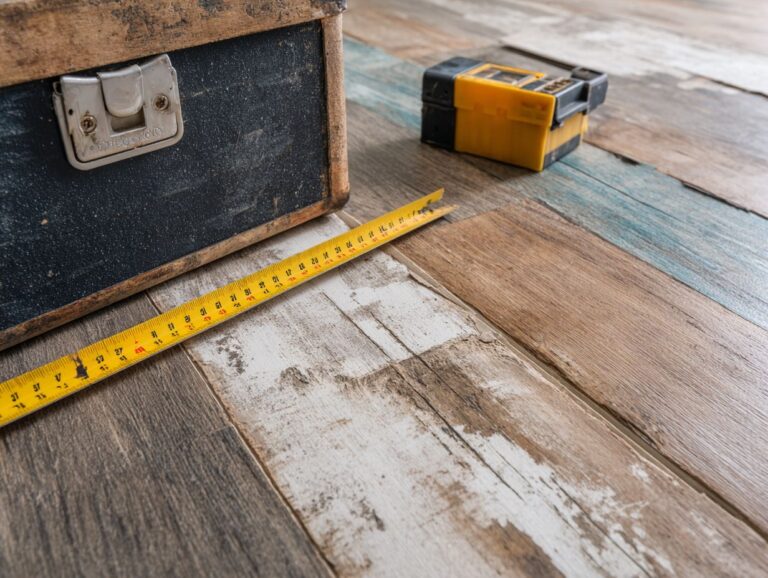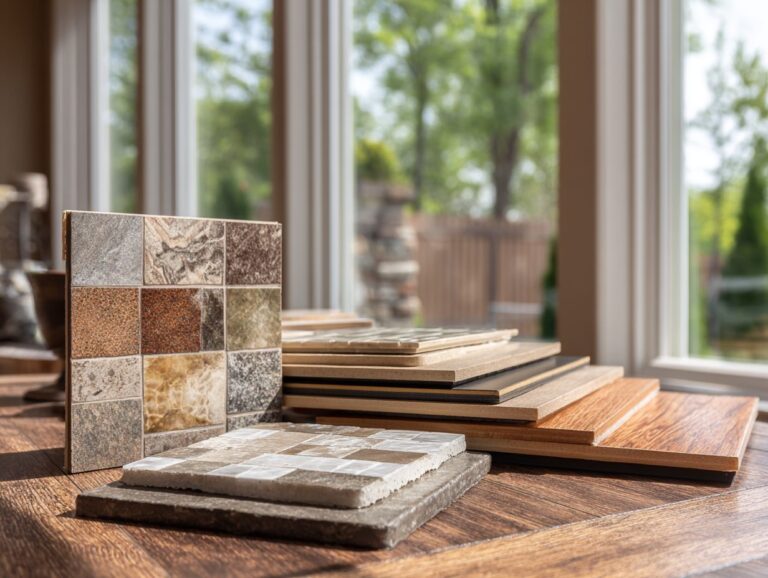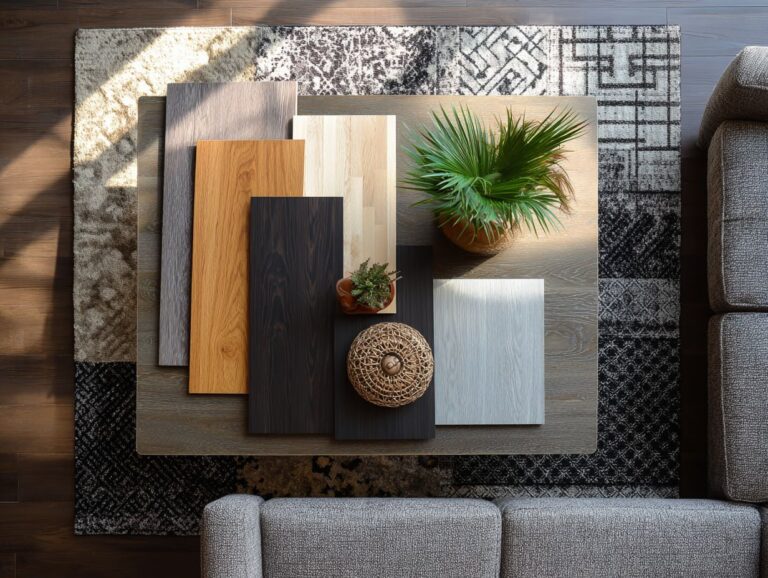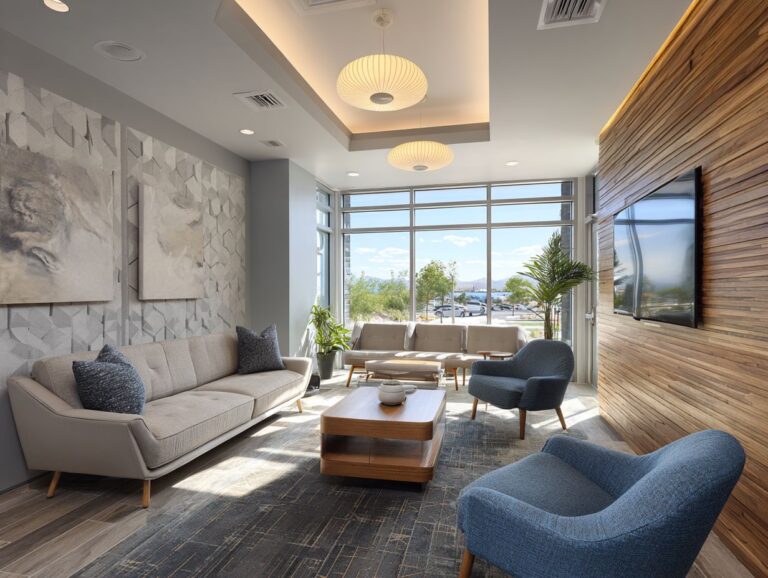Antimicrobial Flooring Options – Health Benefits
Hospitals need antimicrobial flooring to improve patient safety and control infections effectively. By minimizing bacterial growth, these specialized surfaces offer significant health benefits for both patients and staff. This article looks at different antimicrobial flooring choices and their important role in keeping spaces safe and clean. Find out how these new materials can improve healthcare settings and keep everyone who enters safe.
Key Takeaways:
Contents
- Types of Antimicrobial Flooring
- Health Benefits of Antimicrobial Flooring
- Antimicrobial Flooring Health Data
- Public Health and Antimicrobial Resistance: Healthcare-Associated Infections
- Public Health and Antimicrobial Resistance: Financial Impact of HAIs
- Public Health and Antimicrobial Resistance: Pathogen Persistence on Surfaces
- Public Health and Antimicrobial Resistance: Antimicrobial Flooring Benefits
- Reduction of Pathogen Growth
- Prevention of Allergens
- Improved Indoor Air Quality
- Improved Safety in Healthcare Facilities
- Applications of Antimicrobial Flooring
- Choosing the Right Antimicrobial Flooring
- Frequently Asked Questions
- What are antimicrobial flooring options?
- What are the health benefits of antimicrobial flooring?
- How do antimicrobial floors work?
- Are antimicrobial flooring options safe for use in homes?
- What type of flooring materials can have antimicrobial properties?
- Do antimicrobial floors require special cleaning or maintenance?
Definition and Importance
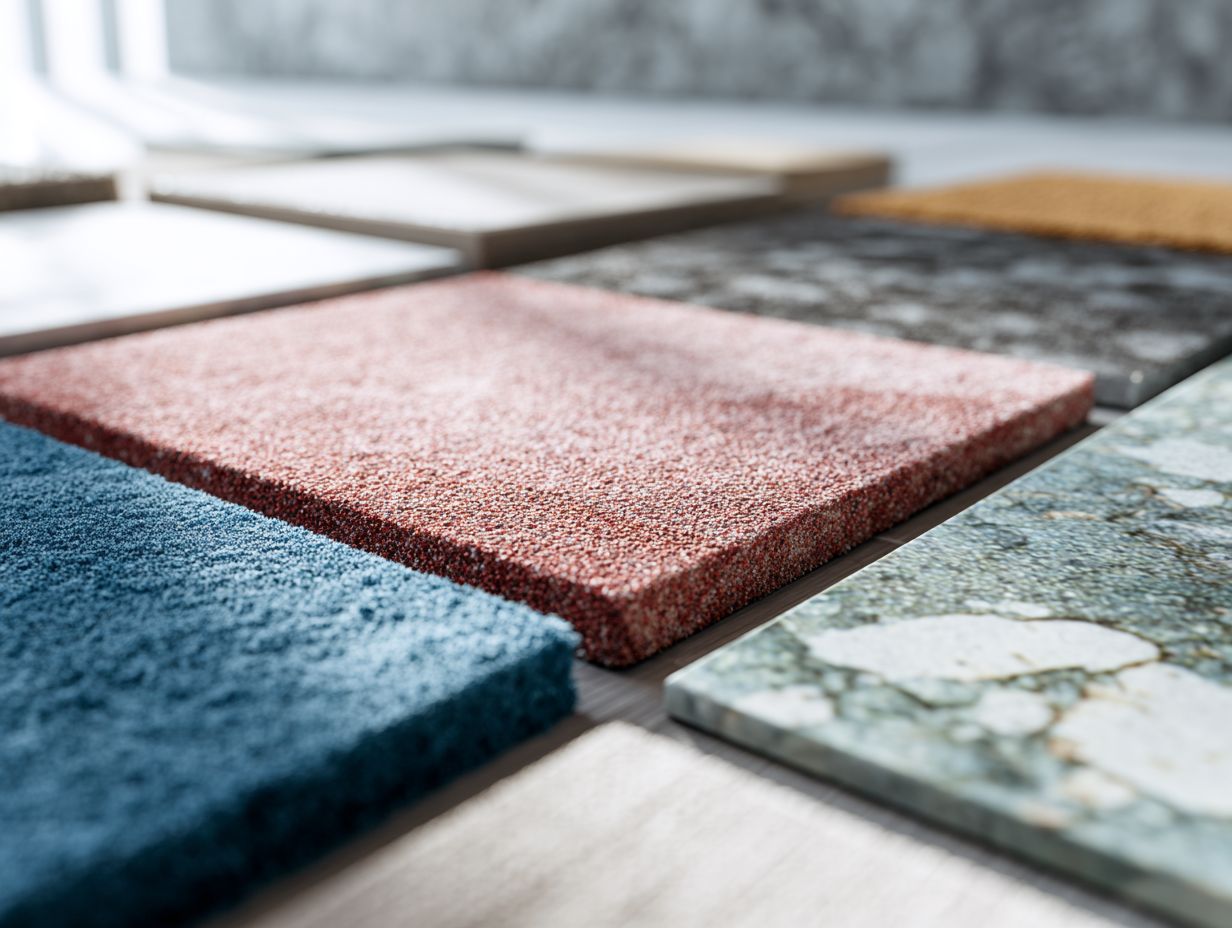
Antimicrobial flooring includes materials made to stop the growth of dangerous germs, which is essential for keeping safety in places like hospitals and clinics.
In healthcare settings, untreated surfaces can harbor pathogens like MRSA, C. difficile, and E. coli. For example, a recent study found that traditional vinyl flooring could sustain bacterial growth for weeks, posing infection risks to patients.
By choosing antimicrobial options, such as polyurethane or epoxy coatings, facilities can actively reduce these threats. Products like Altro or Tarkett are specifically engineered for hospitals to provide both durability and hygiene.
Regular upkeep, such as detailed cleaning routines, keeps these floors effective in stopping microbes from spreading.
Overview of Antimicrobial Properties
Antimicrobial flooring employs advanced surface treatments that actively reduce bacterial growth and combat the spread of pathogens by up to 99%.
These treatments often use substances such as silver ions or copper nanoparticles, which interfere with the growth and energy functions of microbes.
For example, studies show that flooring with copper-infused particles can inhibit MRSA growth by over 90% compared to traditional materials.
Coatings such as polyurethane increase durability and maintain antimicrobial effectiveness. Regular maintenance with disinfectant cleaners further supports these properties, ensuring long-lasting protection.
Choosing the right flooring option can significantly impact hygiene standards in hospitals, kitchens, and schools.
Types of Antimicrobial Flooring
Different kinds of antimicrobial flooring are available. Each type is designed to meet the unique requirements of healthcare and commercial settings.
They improve hygiene and are built to last. For those interested in how flooring can enhance property value, our Cost vs Value Report on Flooring Improvements offers valuable insights.
Vinyl Flooring
Vinyl flooring, which often includes materials that kill germs, offers a durable surface that is easy to clean and maintain, making it ideal for busy healthcare areas.
Brands like Eco Flooring USA lead the way in producing high-quality antimicrobial vinyl that resists odors, mold, and mildew-critical benefits in medical environments.
Keeping it clean is easy; regular cleaning with gentle soap and a wet mop is enough for hygiene. The water-resistant nature of vinyl flooring minimizes the risk of damage from spills.
For optimal durability, consider installations with a protective wear layer, ensuring longevity even under frequent sterilization processes.
Ceramic and Porcelain Tiles
Ceramic and porcelain tiles are popular choices for antimicrobial flooring due to their non-porous surface, which helps prevent bacterial growth and supports hygiene.
These tiles are very durable, making them a great choice for areas where many people walk. Their ease of cleaning is particularly beneficial in settings like bathrooms and surgical rooms, where sanitation is critical.
A simple solution of warm water and mild detergent can effectively remove contaminants, ensuring a hygienic surface. The tiles’ resistance to stains and moisture makes them ideal for environments requiring stringent hygiene standards.
Facilities often choose these tiles for their usefulness and their attractive look, offered in many designs and finishes.
Carpet Tiles
Carpet tiles with antimicrobial treatment provide comfort in commercial spaces while reducing allergens and enhancing indoor air quality.
These carpet tiles are particularly beneficial in environments like schools and offices where foot traffic and spills are common.
To maintain their effectiveness, regularly vacuum to remove dust and debris, and use a damp cloth with mild detergent for spot cleaning. To keep your space really clean, consider hiring a steam cleaning service twice a year.
Products such as Hoover SmartWash or Bissell ProHeat can clean tiles and restore their original appearance.
By adhering to these maintenance practices, facilities can significantly reduce allergen buildup, promoting a healthier atmosphere for occupants.
Laminate Flooring
Modern laminate flooring options with antimicrobial properties combine aesthetic appeal with effective protection against harmful microorganisms.
These floors often feature advanced surface treatments such as silver ion technology, which inhibits microbial growth. Designs can resemble real wood or stone, making them ideal for any room.
To maintain their antimicrobial efficacy, regular cleaning is essential. Use a pH-neutral cleaner and microfiber mop to prevent dust and dirt buildup. Avoid harsh chemicals that may damage the protective layer.
By following these cleaning steps, homeowners can keep their homes working well and healthy for a long time.
Rubber Flooring
Rubber flooring is durable and prevents slipping, making it a suitable choice for healthcare facilities where patient safety is a priority.
Along with its slip-resistant qualities, rubber flooring can significantly reduce the risk of falls in hospitals by providing a stable surface underfoot.
To maintain its antimicrobial properties, use cleaning solutions like Hydrogen Peroxide or Quaternary Ammonium Compounds, which effectively eliminate harmful bacteria. Regular cleaning with a neutral pH cleaner improves grip and makes the flooring last longer.
Facilities should create a daily cleaning routine to keep the environment safe, particularly in busy areas where spills might happen more often.
Health Benefits of Antimicrobial Flooring
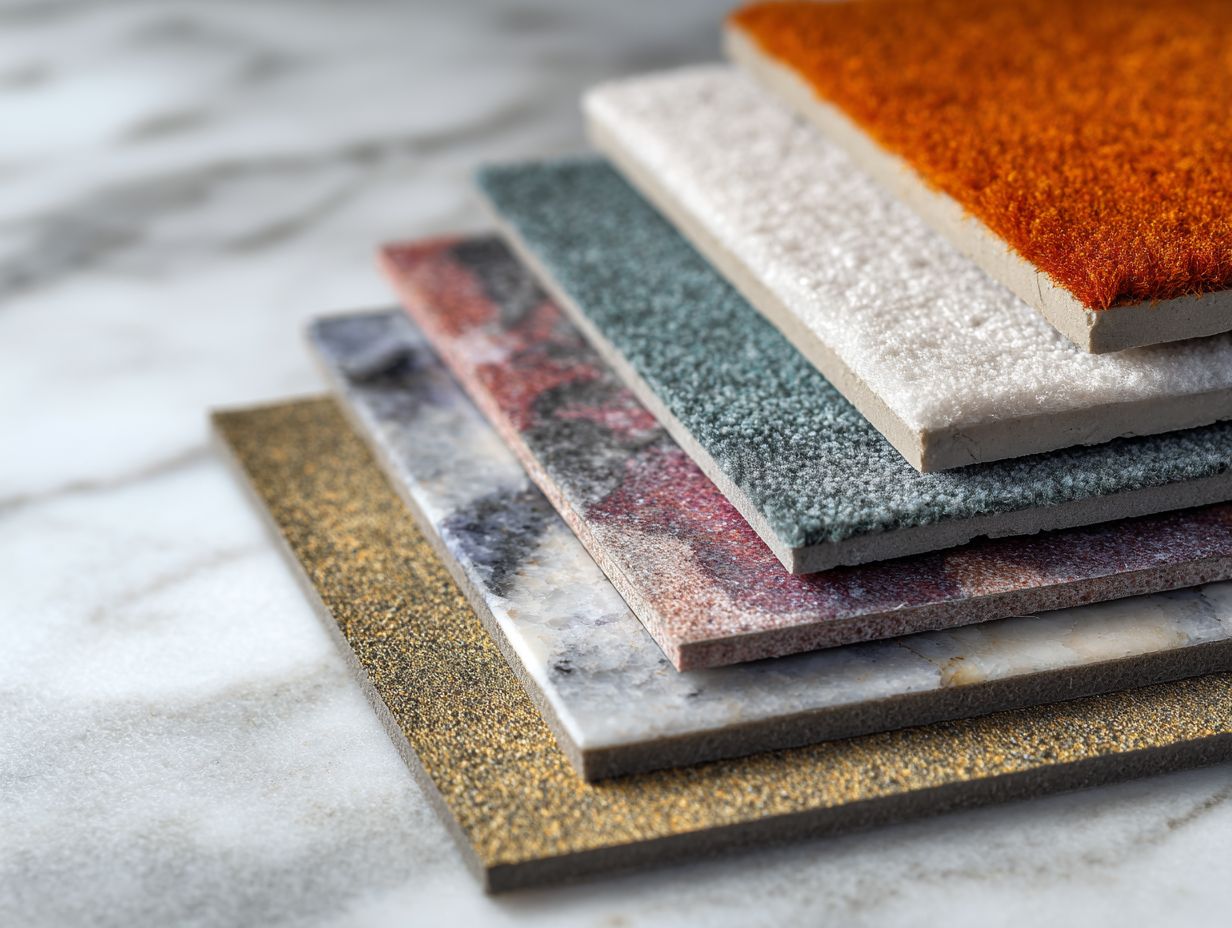
Antimicrobial flooring greatly helps with health benefits, such as lowering pathogen growth and bettering indoor air quality in different places. For those looking to further minimize exposure to harmful substances, exploring non-toxic flooring materials can be a beneficial step.
Antimicrobial Flooring Health Data
Antimicrobial Flooring Health Data
Public Health and Antimicrobial Resistance: Healthcare-Associated Infections
Public Health and Antimicrobial Resistance: Financial Impact of HAIs
Public Health and Antimicrobial Resistance: Pathogen Persistence on Surfaces
Public Health and Antimicrobial Resistance: Antimicrobial Flooring Benefits
The Antimicrobial Flooring Health Data explains how public health and antimicrobial resistance are connected, focusing on the importance of flooring in healthcare settings. The data shows why stopping infections that occur in healthcare settings is important. It points out the costs and health problems caused by these infections in Europe and the USA.
Public Health and Antimicrobial Resistance data reveal that HAIs result in significant mortality annually, with 37,000 deaths in Europe and 99,000 deaths in the USA. These figures stress the need for effective infection control measures, including antimicrobial flooring, which can help minimize the spread of pathogens within healthcare settings.
- The financial impact of HAIs is profound, with losses amounting to EUR7 billion in the EU and $6.5 billion in the USA. These costs encompass extended hospital stays, additional treatments, and the economic burden on healthcare systems, emphasizing the need for preventive measures to reduce these expenses.
Pathogen Persistence on Surfaces highlights the durability of pathogens like Clostridium difficile, which can persist on surfaces for 150 days, and SARS-CoV-2, surviving for 3 days. These results show how important antimicrobial flooring is in stopping the spread of tough organisms.
- Antimicrobial flooring benefits include 100% slip-resistant designs, ensuring safety in healthcare environments, and a 50% reduction in volatile organic compounds (VOCs) due to low-VOC flooring materials. These features make patient and staff safety better and also make indoor air quality better, which helps create healthier spaces.
Overall, the Antimicrobial Flooring Health Data Highlights the importance of using antimicrobial flooring to fight healthcare-associated infections, lower costs, and improve public health. By using these technologies, hospitals can make environments safer and more sustainable, which leads to better patient care and smoother operations.
Reduction of Pathogen Growth
By utilizing antimicrobial flooring, facilities can reduce pathogen growth by up to 99%, significantly lowering the risk of infections among patients and staff.
These flooring options contain silver ions or copper particles that interfere with the activity of microbial cells, making them useful in high-risk areas like hospitals.
For instance, a study published in the Journal of Hospital Infection found that antimicrobial flooring led to a 70% reduction in bacteria levels within a clinical setting over six months.
Popular options like Altro’s XpressLay and Gerflor’s Taraflex are specially designed for easy installation and cleaning, ensuring a safe environment without extensive downtime, enhancing overall facility hygiene.
Prevention of Allergens
Antimicrobial flooring helps prevent the accumulation of allergens, such as dust mites and mold, thus improving indoor air quality and reducing respiratory issues.
These flooring products, like luxury vinyl tile (LVT), ceramic tile, and treated carpets, contain antimicrobial agents that prevent germs from growing.
For example, LVT with built-in antimicrobial properties has shown to reduce allergens significantly, supporting studies that indicate a 30-50% decrease in allergy symptoms in homes using these materials.
Brands such as Mohawk’s SmartStrand or Shaw’s R2X have effective antimicrobial treatments that make homes healthier, particularly for those with allergies.
Regular cleaning will make them work better and provide benefits over time.
Improved Indoor Air Quality
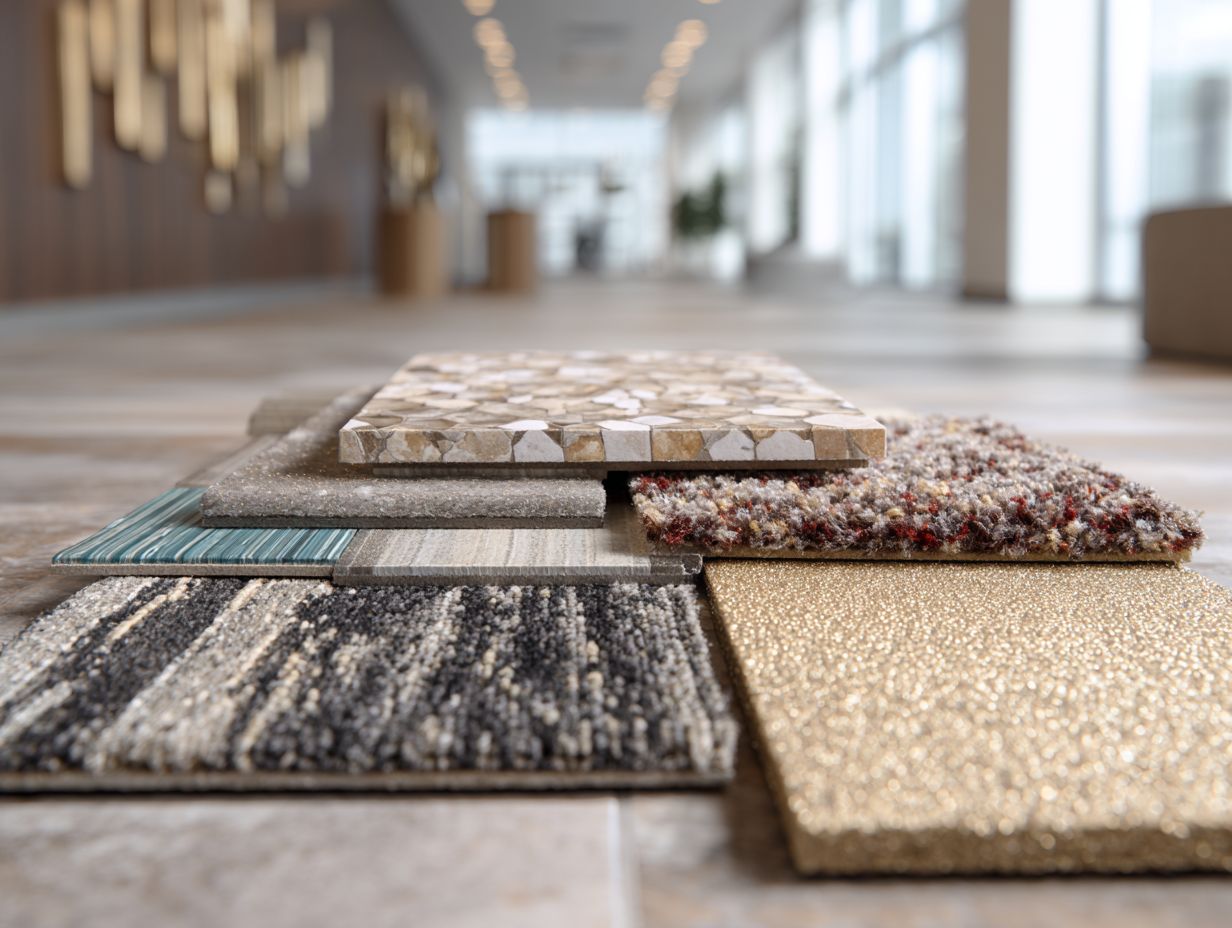
The use of antimicrobial flooring is linked to improved indoor air quality, which is essential for the health of occupants in commercial and healthcare environments.
Studies have shown that antimicrobial flooring significantly reduces the presence of harmful bacteria and mold, which are major contributors to poor indoor air quality. For instance, research from the Journal of Environmental Health indicates that facilities using antimicrobial surfaces reported a 50% decrease in airborne contaminants.
Regular maintenance is important. Use cleaners that are pH-neutral to maintain the antimicrobial properties, and clean every three months. This method improves air quality and creates a healthier environment for both employees and patients.
Improved Safety in Healthcare Facilities
Improving safety measures in healthcare places is greatly aided by using antimicrobial floors, which lower the chance of infections in important zones.
Case studies reveal that hospitals using antimicrobial flooring have experienced a 30% decrease in healthcare-associated infections (HAIs).
For instance, a study at a major hospital in Texas highlighted that switching to these specialized floors led to a drop in surgical site infections from 5% to 3% within a year. A children’s hospital in California reported a 40% reduction in Clostridium difficile cases post-installation.
The statistics show that antimicrobial flooring improves patient safety and cleanliness throughout the facility.
Applications of Antimicrobial Flooring
Antimicrobial flooring is used in many areas such as healthcare, schools, and business environments, each gaining from its special features. If you are interested in flooring that minimizes health risks, you might appreciate our insights on hypoallergenic flooring options that can benefit those with allergies.
Healthcare Settings
In healthcare settings, antimicrobial flooring is important for preventing healthcare-associated infections (HAIs), improving patient safety, and lowering costs.
These specialized flooring materials contain additives that inhibit microbial growth, significantly lowering the risk of pathogen transmission. For instance, hospitals that installed vinyl flooring with antimicrobial agents reported a 50% decrease in infection rates post-implementation.
Brands like Altro and Gerflor offer durable options with built-in protection against germs, making them suitable for high-traffic areas. Using approved cleaning products regularly helps keep them working effectively, maintains a germ-free environment, and manages long-term expenses.
Schools and Daycare Centers
Antimicrobial flooring in schools and daycare centers addresses hygiene concerns and allergen reduction, safeguarding children’s health in learning environments.
Using antimicrobial flooring such as the Elevate option from Shaw Contract or the Striations choice from Armstrong has produced great results. For instance, Lincoln Elementary in California installed Shaw’s flooring and reported a 40% decrease in sickness-related absences after six months.
The University of Colorado Boulder adopted Armstrong’s products, leading to fewer allergen complaints from students and staff. Both cases show how antimicrobial surfaces fight germs and create a healthier environment, improving student health and learning results.
Commercial Spaces
Commercial spaces, from retail to hospitality, benefit from antimicrobial flooring by attracting health-conscious consumers while ensuring a safe environment.
For instance, a local gym installed antimicrobial vinyl flooring. This improved their cleanliness reports and received positive feedback, with members feeling safer during workouts.
A boutique hotel chose rubber flooring for its lobby, noting a significant reduction in illness-related complaints among guests.
Using materials like carpet tiles with antimicrobial treatments or linoleum can improve both looks and usability in crowded places. This decision leads to a better environment, which increases customer happiness and loyalty.
Residential Use
Using antimicrobial flooring in homes helps keep families safe and healthy, especially for children and those with allergies.
This flooring stops bacteria and mold from growing, making it a good choice for parents who are concerned about allergens.
For instance, a family in suburban Texas reported that after installing antimicrobial vinyl, their son’s asthma symptoms significantly improved.
Homeowners can choose from options like:
- Luxury vinyl plank, which is durable and easy to clean,
- Carpet tiles infused with antimicrobial agents for added comfort.
Regular cleaning with a pH-balanced solution improves these features, creating a safer place to live.
Choosing the Right Antimicrobial Flooring
Choosing the best antimicrobial flooring requires looking at different aspects such as how well the material works, impact on the environment, and costs. An important consideration is ensuring the flooring material is non-toxic, as elaborated in our guide to non-toxic flooring materials which emphasizes creating chemical-free homes.
Factors to Consider
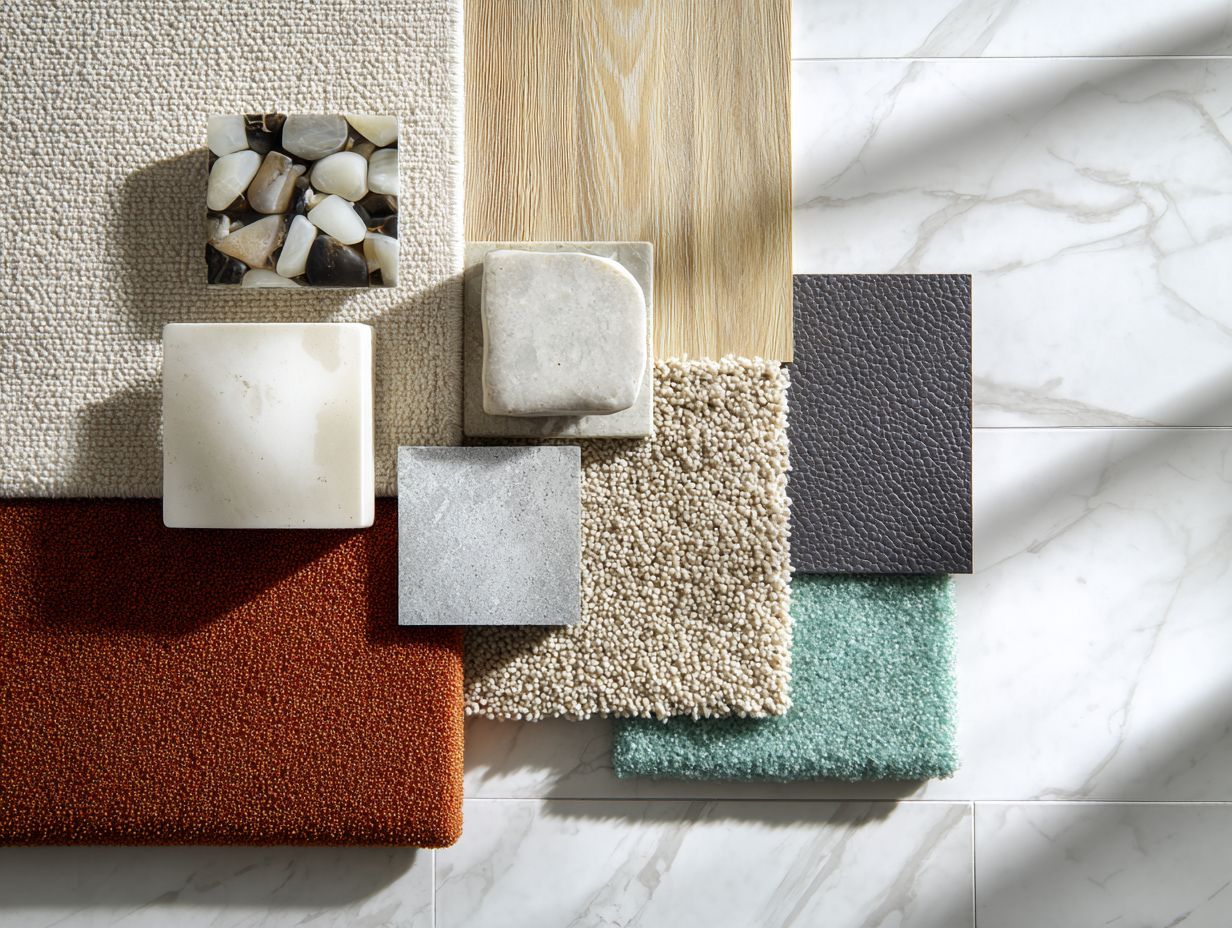
When selecting antimicrobial flooring, factors such as durability, ease of cleaning, and aesthetic appeal significantly influence the final choice.
Consider material composition and maintenance requirements. For instance, vinyl flooring with an embedded antimicrobial agent prevents bacterial growth while also offering scratch resistance.
Look for options like luxury vinyl tile (LVT) that can withstand heavy foot traffic and are simple to maintain with regular mopping and no harsh chemicals.
The look of your space can improve by selecting a design that looks like real wood or stone, offering a pleasing appearance and promoting health. In the end, choosing the best antimicrobial flooring involves finding a balance between practical use and attractiveness.
Cost vs. Benefits
Evaluating the costs and benefits of antimicrobial flooring is important because spending money upfront can save money in maintenance and health expenses over time.
The upfront price of antimicrobial flooring can range from $2 to $8 per square foot, depending on material quality. For instance, while a vinyl option may cost less initially, its durability and lower maintenance needs often yield a better return on investment.
In contrast, ceramic tiles, although pricier at around $5 to $10 per square foot, offer superior longevity and require minimal upkeep, significantly cutting down on repair costs. Over the years, the health benefits-fewer allergens and bacteria-can lead to reduced healthcare costs, making these floors a wise financial decision in the long run.
Summary of Key Points
The essential points about antimicrobial flooring include its effectiveness in infection control, health benefits, and variety of materials available.
When considering antimicrobial flooring, options like vinyl, tile, and carpet come into play.
-
Vinyl is a flexible and water-resistant material, making it suitable for high-traffic areas such as hospitals or schools.
-
Tile is long-lasting and simple to clean, which makes it a good choice for kitchens and bathrooms.
-
Carpeting with germ-fighting treatments can make patient rooms or offices more comfortable.
Before deciding, check how well each material resists stains, how easy it is to install, and what maintenance it needs to find the best option for your space.
Future Trends in Antimicrobial Flooring
Developments in antimicrobial flooring will focus on new technology to improve function and eco-friendliness.
Recent advancements include the use of silver nanoparticles, which effectively inhibit bacterial growth without compromising aesthetics.
Bio-based materials, such as linoleum made from natural ingredients, are gaining traction for their eco-friendly properties.
New technologies such as UV-C light treatments provide better sanitation by effectively killing germs. These new improvements help maintain cleanliness in areas like hospitals and kitchens and fulfill the demand for eco-friendly solutions, marking a significant step towards cleaner flooring options.
Frequently Asked Questions
What are antimicrobial flooring options?
Antimicrobial flooring options are types of flooring that are specifically designed to inhibit the growth of microorganisms, such as bacteria, fungi, and viruses. These floors are often used in places like hospitals, restaurants, and other busy areas where keeping things clean and free from germs is very important.
What are the health benefits of antimicrobial flooring?
Antimicrobial flooring provides health benefits by lowering the chance of infections and diseases from microorganisms. This type of flooring also helps to maintain a clean and hygienic environment, which is essential for preventing the spread of diseases.
How do antimicrobial floors work?
Antimicrobial floors contain special additives, such as silver ions or copper, which are embedded into the floor material. These additives act as a barrier against microorganisms, preventing them from reproducing and spreading. They also help to eliminate existing bacteria on the floor’s surface.
Are antimicrobial flooring options safe for use in homes?
Yes, antimicrobial flooring options are safe for use in homes. In fact, they can be particularly beneficial for households with children or pets who are more susceptible to diseases and infections. These floors are also safe for individuals with allergies or respiratory issues, as they help to reduce the presence of allergens and irritants.
What type of flooring materials can have antimicrobial properties?
Some flooring materials that can resist microbes include vinyl, linoleum, rubber, and epoxy. Some manufacturers provide coatings that can be added to existing hardwood or tile floors to make them resistant to bacteria and germs.
Do antimicrobial floors require special cleaning or maintenance?
No, antimicrobial floors do not require any special cleaning or maintenance. However, make sure to follow the manufacturer’s instructions for cleaning products and methods to keep the antimicrobial features working properly. Regular cleaning and maintenance are still necessary to keep the floors in good condition and to prevent the buildup of dirt and debris.
